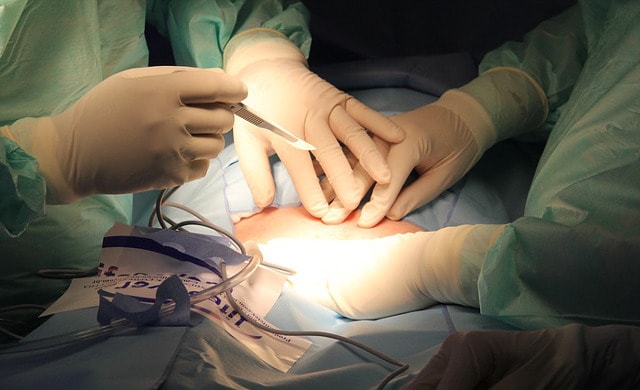A Caesarean section or C-section is an alternative to vaginal birth. It is a surgical procedure in which your obstetrician / gynecologist makes an incision through your lower abdomen and then through your uterus in order to access and deliver your baby.

A C-section surgery usually lasts 45 minutes to one hour. While some C-sections are planned, others are last-minute procedures when there are difficulties delivering the baby through vaginal birth. A C-section is considered a relatively safe procedure; however, as with any surgery, there is a chance that you may experience complications, one of which is adhesions.
Adhesions are internal scars that may form on or between internal organs and/or body tissue after surgery. As C-section surgery involves the cutting and manipulation of internal tissues and organs, they may become inflamed. As a result of these tissues healing close together, C-section adhesions may form between your uterus, ovaries, bladder, and abdominal wall. This may cause future complications like small bowel obstruction, infertility, and chronic pelvic pain.
Interview with Dr. Chia Yin Nin, Head, Gynae Cancer Unit from KK Women’s and Children’s Hospital
1) What complications can adhesions lead to?
Adhesions can result in small bowel obstruction, infertility, chronic pelvic pain and increases the complexity of future surgery. For obstetrics patients after caesarean section(s), adhesions can result in delayed delivery of the baby at the next caesarean section as well as the risk of bladder injury.
2) Are adhesions the main culprits behind some of the post C-section complications, like infertility, abdominal pain and bowel obstruction?
Yes. Because C-section surgery involves the cutting and manipulation of internal tissues and organs, they become inflamed. As a result of these tissues healing close together, C-section adhesions may form between the uterus, ovaries, bladder and abdominal wall. Some C-section adhesions do not cause problems but those that prevent tissues and organs from moving freely become a health issue, causing the affected tissues and organs to become twisted or pulled from their normal positions.
3) Are there varying levels of danger when it comes to adhesions?
Generally, adhesions can be graded as mild, moderate or severe.
4) Is there a window of time to surgically remove the formed adhesions before the complications worsen?
Often, adhesions are only discovered when a patient present symptoms to suggest complications. Some adhesions shows no symptoms and in such situation, it is often not discovered or it is an incidental discovery at an unrelated surgery. Hence, there is no such a window of time to surgically remove adhesions. Furthermore, every surgical intervention may predispose to more adhesions formation.
However, in the case of C-sections, adhesions can delay the delivery of the baby and increase the chances of injury to the bowel and bladder.
5) Besides C-section, what other surgical procedures may lead to adhesions?
Any abdominal or pelvic surgery can result in adhesions.
6) I understand Seprafilm can reduce the chances of forming scar tissues after a surgical procedure – how effective is Seprafilm? Is there a statistical figure as to how much Seprafilm actually reduces the risk?
To help reduce the likelihood of forming adhesions after a surgical procedure, an OB/gynae may choose to use an adhesion barrier such as the Seprafilm, in the procedure. During a C-section, your OB/gynae may place the adhesion barrier on your uterus or under the incision after the baby has been removed, in order to separate your uterus from the abdominal wall, thus helping the tissues to heal separately.
There are studies which showed that Seprafilm is effective in reducing the risk of adhesions. In one study on patients who previously had myomectomy, the incidence of uterine adhesions decreases by 30% with the use of Seprafilm. In another study on patients who underwent repeat caesarean section, the incidence of adhesions was 7.4% in the Seprafilm group vs 48% in the control group in which Seprafilm was previously not used.
 Dr. Chia Yin Nin
Dr. Chia Yin Nin
Consultant, Department of Gynaecological Oncology, since May 2008
Head, Gynae Cancer Unit, since Feb 2010
Medical Board Member, 2011
KK Women’s and Children’s Hospital
* * * * *
Like what you see here? Get parenting tips and stories straight to your inbox! Join our mailing list here.
Want to be heard 👂 and seen 👀 by over 100,000 parents in Singapore? We can help! Leave your contact here and we’ll be in touch.















































Leave a Comment: